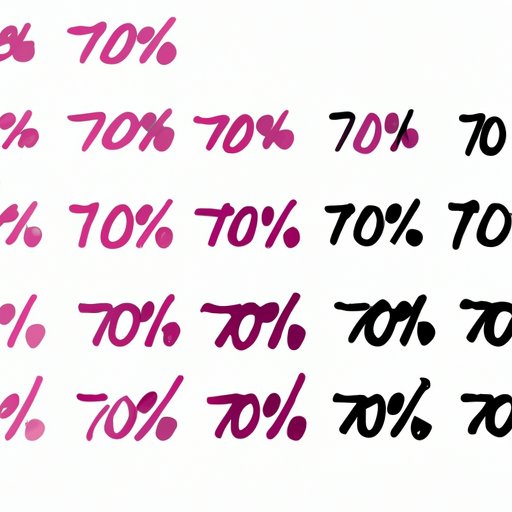
Introduction
Percentage difference refers to the comparison of two values, expressed as a percentage of their average. It is commonly used to determine the difference between two values and express it as a percentage of the average value. For example, a percentage difference of 50% means that the two values being compared differ by 50% of their average value.
Knowing how to calculate percentage difference is important in various fields, including finance, science, and education. This article aims to provide a step-by-step guide to calculating percentage difference, including examples and practical applications.
Examples
Calculating percentage difference can be applied in various scenarios. For instance, calculating the difference in prices, scores, percentages, and more. Below are a few examples to illustrate these scenarios:
Example 1: You purchased a new mobile phone for $1,000, and you notice that the same model is now available for $800. What is the percentage difference in price?
Solution: First, calculate the average value of the two prices:
Average value = (Initial Price + Final Price) / 2
Average value = ($1,000 + $800) / 2 = $900
Next, calculate the difference between the two prices:
Price Difference = Initial Price – Final Price
Price Difference = $1,000 – $800 = $200
Then, calculate the percentage difference:
Percentage Difference = (Price Difference / Average Value) * 100
Percentage Difference = ($200 / $900) * 100 = 22.22%
Example 2: Your Physics exam score increased from 70% to 83%. What is the percentage increase?
Solution: First, calculate the average value of the scores:
Average value = (Initial Score + Final Score) / 2
Average value = (70% + 83%) / 2 = 76.5%
Next, calculate the difference between the scores:
Score Difference = Final Score – Initial Score
Score Difference = 83% – 70% = 13%
Then, calculate the percentage increase:
Percentage Increase = (Score Difference / Average Value) * 100
Percentage Increase = (13% / 76.5%) * 100 = 16.99%
Step-by-Step Guide
Calculating percentage difference requires the following steps:
Step 1: Calculate the average value of the two values being compared.
Step 2: Calculate the difference between the two values being compared.
Step 3: Divide the difference by the average value to get the ratio.
Step 4: Multiply the ratio by 100 to get the percentage difference.
The following are examples to help better understand each step:
Example: Suppose you want to calculate the percentage difference between 300 and 150.
Step 1: Calculate the average value:
Average value = (300 + 150) / 2 = 225
Step 2: Calculate the difference:
Difference = 300 – 150 = 150
Step 3: Divide the difference by the average value to get the ratio:
Ratio = Difference / Average value = 150 / 225 = 0.6667
Step 4: Multiply the ratio by 100 to get the percentage difference:
Percentage Difference = Ratio x 100 = 66.67%
Images and Graphs
Visual illustrations of the concept can be helpful in understanding percentage difference. Below are some graphs and images to provide an example of calculating percentage difference:

Incorporate Formulas
The formula for calculating percentage difference is:
Percentage Difference = (Difference / Average Value) x 100
This formula can be simplified as:
Percentage Difference = (|New Value – Old Value| / (New Value + Old Value) / 2) x 100
In this formula, “|” represents absolute value, or the positive value regardless of the direction of change (increased or decreased).
Common Mistakes
Common mistakes when calculating percentage difference can affect the accuracy of the results. One common mistake is using the wrong order of the values. Always subtract the smaller value from the larger value to ensure a positive difference.
Another common mistake is using the wrong formula or incorrect units of measurement. Be sure to pay attention to the units and use the correct formula for the values being compared.
Practical Applications
Percentage difference can be useful in various real-life scenarios. Below are some examples:
- Determining the difference in prices for a product over time to analyze market changes
- Calculating the difference in student test scores to identify areas for improvement in teaching methods
- Analyzing the difference in sales over a period to determine the effectiveness of marketing strategies
Conclusion
Calculating percentage difference is an important skill in various fields. Accurate calculations ensure better analysis and results. This step-by-step guide provides examples, formulas, and practical applications of percentage difference to help readers understand and apply it in real-life scenarios.





